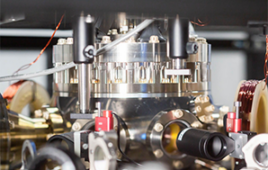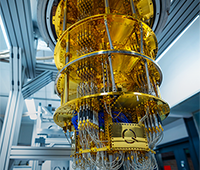Supercomputing Green500 List Released
 |
According to the latest Supercomputing Green500 List, announced November 19, 2009, by Green500.org, IBM supercomputers are the most energy efficient in the world. The Green500 list is published by Green500.org. It provides a ranking of the most energy-efficient supercomputers and serves as a complementary view to the TOP500 list of worldwide.
The purpose of the Green500 is to provide a ranking of the most energy-efficient supercomputers in the world. For decades, the notion of “performance” has been synonymous with “speed”. This particular focus has led to the emergence of supercomputers that consume egregious amounts of electrical power and produce so much heat that extravagant cooling facilities must be constructed to ensure proper operation. In addition, the emphasis on speed as the ultimate metric has caused other metrics such as reliability, availability and usability to be largely ignored. As a result, there has been an extraordinary increase in the total cost of ownership (TCO) of a supercomputer.
In order to raise awareness to other performance metrics of interest (e.g., performance per watt and energy efficiency for improved reliability), the Green500 offers lists to encourage supercomputing stakeholders to ensure that supercomputers are only simulating climate change and not creating climate change. The list includes supercomputers from Saudi Arabia to Germany and the United States that are being used for a variety of applications such as astronomy, climate prediction and pharmaceutical research. The current list shows that 18 of the Top 20 most energy efficient supercomputers are built on IBM high-performance computing technology. IBM also holds 69 of the Top 100 positions on this list.
The number one most energy efficient system in the world — a supercomputer built at the Julich supercomputing center in Germany as part of a collaboration between IBM and an academic consortium of universities and research centers — produces more than 723 Mflops (millions of floating point operations per second) per watt of energy. The IBM supercomputer at Los Alamos National Laboratories — which first broke through the petaflop barrier and was second on the recently announced Top500 list of the world’s most powerful supercomputers — is ranked the sixth most energy-efficient supercomputer in the world, capable of over 444 Mflops per watt of energy.
“Supercomputers can no longer focus only on raw performance. The era of simply adding more processors is coming to a close,” said David Turek, vice president, deep computing, IBM. “Clients need to be able to run supercomputers anywhere, not only places that have cheap power. As the Green500 proves, IBM has focused on this issue for some time and is well positioned to usher in performance breakthroughs along with efficiency gains.”
To view the Green500 List: http://www.green500.org/lists/2009/11/top/list.php?from=1&to=100



